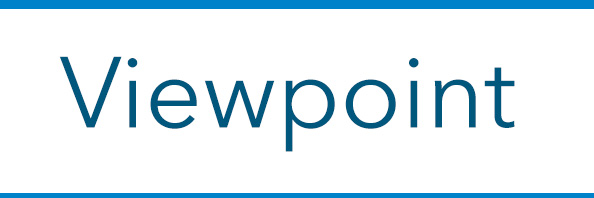Higher education is at a point of inflection in which it must decide its purpose in America. President Joe Biden’s plan to offer the first two years of college tuition-free has created an imbalance in the status quo and thrust itself into an identity crisis.
Supporting this plan means seeing millions of more American’s gain access to postsecondary education but also seeing two- and four-year institutions at a crossroads. This plan, while benefiting both, seems to be more balanced in the two-year college’s favor. Should higher education support such a plan in which some colleges benefit more than others?

There has been some criticism of the president’s plan for two years of community college or similar training and education. One of the criticisms points to low graduation rates outlined in a 2018 Brooking Report. Approximately 40% of community college students earn a certificate or degree within six years of enrollment. The question then is, “Does adding more students lead to more of the same outcome?”
A second criticism is that funding an initiative such as Biden’s plan for free community colleges does not error-correct for the abysmal state of funding public colleges. According to Pew Research, state funding toward higher education has yet to reach pre-recession levels.
Both of these criticisms are valid. Increased completion rates, along with lowering college costs while increasing state and national funding, should be and are important objectives.
Another criticism should be leveled: Why aren’t the first two years of college free or cost-effective? During the early 1800s, a few states began free schooling. Massachusetts, for example, became the first state to offer free schooling. By the 1960s, 48 states required compulsory education under President Lyndon B Johnson’s Elementary and Secondary Education Act. Education is the one institution that is said to be the great equalizer.
In perspective
Despite this ideal, we know education is not as equal as we like despite many wonderful educators and philanthropists’ heroic attempts. W.E.B. Dubois once said, “The problem with the twentieth century is the problem of the color line.” This line still has a nightmarish hold over the institution of education today. Jonathan Kozol’s 1991 book, Savage Inequalities, unveiled these inequities built into a supposed system to raise all boats in a sea of disparity. Still, there is a stark unevenness in graduation rates by race and social class. These inequities found in races and social classes are illustrations of a flawed system despite our best efforts.
Indeed, two-year colleges do not have the same completion rates as four-year colleges. But comparing two- and four-year colleges is like comparing apples and oranges. There are clear and distinct social and economic differences between students who can enroll into more expensive colleges with fewer family or economic obligations. Often, many students who enter two-year colleges juggle raising a family, making a living and going to school. These are some of the hardest Americans you will ever come across. And if America has a chance to guide them and future generations like them along, we have a national and moral obligation to do so.
Having the resolve
History has shown that increasing educational access nearly always nets a positive outcome. When I was earning my degree in education, one profound study I came across was the link between children’s access to books within the home and their academic performance. Access makes a difference. We should not let the cost of education hinder our attempt to see reduced college costs for those in most need.
An argument to limiting access toward a human right isn’t new. During the 1900s, the American Medical Association waged a battle against universal healthcare. Paul Starr’s definitive book, The Social Transformation of American Medicine, The Rise of a Sovereign Profession and the Making of a Vast Industry, highlighted the decades-long resistance to universal healthcare.
And yet, with enough resolve, former President Barack Obama was able to overcome the impossible and lead the country toward universal healthcare. With all its criticisms and faults, the Affordable Care Act is supported by most of the country.
Rethink higher ed
Now, America is facing a new historic battle in which some parties wish to see and ensure community colleges never become tuition-free. And some of these parties exist within education. Free community college threatens many institutions outside and within academia. According to a report released last month, two years of free community college may cause a significant change in enrollment projections for four-year colleges.
But like most challenges, opportunities arise out of the crisis. There is a growing trend of more high school students earning college credit while still enrolled in high school. This trend is changing if not forcing us to rethink college education.
During one graduation day a few years ago, a graduate told me she was walking across the stage to get her two-year technical diploma and the following week would receive her high school diploma. While I’m not sure if that was completely accurate, it does signify the growing trend for students to seek cost-effective opportunities. Free two years of college is simply a natural extension to this growing trend to seek college credit at a free or reduced price.
A reduced price is only a part of the more considerable benefit of two years of free college. By eliminating financial barriers, our institution has a historic opportunity to change the landscape of America. Free two-year college education doesn’t only provide more college to millions of more Americans. According to Biden’s plan, a technically skilled workforce can grow into jobs that do not require a bachelor’s degree.
These are jobs that contribute significantly to America’s workforce. TV celebrity Mike Rowe often championed some of these jobs in his show Dirty Jobs on the Discovery channel. And in his Ted Talk from 2009, Rowe argues that there is a war on work. And with fewer enrollments in technical schools and infrastructure jobs, America is poised to face a new world in which America is not equipped with growing infrastructure needs and healthcare field demands.
Beyond the status quo
The goal to see millions of more Americans gain access into an increasingly costly system will have unintended consequences and growing pains. However, a mindset to retain a status quo has never been, and should never be, the litmus for what higher education represents.
It is not too often our institution has a chance to provide an opportunity for so many underrepresented Americans to pass through our doors. Martin Luther King, Jr., once said that change does not roll in on the wheels of inevitability but comes through continuous struggle. By this measure, it is our national obligation and honor to support increased access to our institution.





